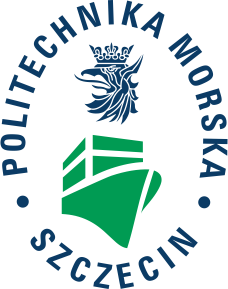Publikacje Urszula Gabriel-Półrolniczak
Tytuł: Multistage ultrafiltration treatment of brine from fish processing in the aspect of regeneration and reuse in production cycle
Autor/Autorzy: Urszula Gabriel-Półrolniczak, Daniela Szaniawska, Michał Kramarczyk
Miejsce publikacji: Desalination and Water Treatment
Rok: 2018
Słowa kluczowe: ceramic membranes, decision support system, ultrafiltration, Waste brine
Abstrakt: In this paper the results of multi-stage research based on ultrafiltration using ceramic membranes with an active layer of TiO2/ZrO2 and 300 – 8.0 kDa cut-off are presented. This work seeks to advance the state of the art in membrane technology for protein separation and treatment of waste brine from fish processing. In the first stage, analyses and evaluation of ceramic membrane performance in model protein-water-NaCl systems were performed and molecular modelling studies on model protein size and stability in certain pH ranges were carried out. In the second stage, tests on treatment of industrial waste brines using commercial membrane modules with a filtration area of 0.35 m2 were conducted. The filtration tests were carried out using a pilot plant with tubular module under variable process conditions. The ultrafiltration treatment of waste brines was investigated using single and multistage technology schemes. The obtained results were elaborated in the form of a database for a decision support system. In the third stage, a decision support system was developed using MATLAB based on the database of results. The resulting decision support system enables selection of an optimal scheme of technology for the treatment of waste brines from fish processing and protein concentration for its further use.
Adres strony internetowej (link) do pełnego tekstu publikacji: http://www.deswater.com/DWT_abstracts/vol_128/128_2018_421.pdf
Tytuł: Nano-structured (Mo,Ti)C-C-Ni magnetic powder
Autor/Autorzy: Sławomir Kaczmarek, Anna Biedunkiewicz, Tomasz Bodziony, Paweł Figiel, Tomasz Skibiński, Marta Krawczyk, Urszula Gabriel-Półrolniczak
Miejsce publikacji: Journal of Achievements of Materials and Manufacturing Engineering
Rok: 2018
Słowa kluczowe: antiferromagnetism, EPR measurements, magnetic anisotropy, magnetic susceptibility, Mo-Ni-Ti-C systems, nanopowder, superparamagnetism
Abstrakt: The paper presents the results of phase composition and magnetic properties of Mo-Ni-Ti-C nanostructured powders. The aim of this research is understanding the correlation between key magnetic properties and the parameters that influence them in the nanostructured powders from Mo-Ni-Ti-C system. Design/methodology/approach: The powder samples were synthesised using modified sol-gel method. Obtained powder were subjected for composition and magnetic properties in a wide temperature range by means of Electron Paramagnetic Resonance (EPR) and magnetic susceptibility measurements. To study the phase composition X-ray diffraction were performed. The morphology of the powders were investigated by scanning electron microscopy (SEM). Findings: Different kinds of structural and magnetic phases have been found in the investigated compounds, e.g. (Mo, Ti)C, C, Ni. It was found that such different phases create different kinds of magnetic interactions, from paramagnetic, antiferromagnetic up to superparamagnetic. Significant magnetic anisotropy has been revealed for low temperatures, which lowers with temperature increase. Moreover, non-usual increasing of the magnetization as a function of temperature was observed. It suggests, that overall longrange AFM interaction may be responsible for the magnetic properties. Research limitations/implications: For the future work explanation which phases in Mo-Ni-Ti-C system are responsible for different kinds of magnetic interactions are planned. Practical implications: The composition of different kinds of phases may be controlled to tune magnetic properties of the nanostructured Mo-Ni-Ti-C systems. Originality/value: In this study, for the first time Mo-Ni-Ti-C nanostructured samples were prepared with different kinds of structural and magnetic phases, creating different kinds of magnetic interactions, from paramagnetic, antiferromagnetic up to superparamagnetic-like. The latter seems to be formed due to the presence of magnetic nanoparticles and longrange antiferromagnetic interactions dominating in the whole temperature range.
Adres strony internetowej (link) do pełnego tekstu publikacji: https://journalamme.org/resources/html/article/details?id=167385


